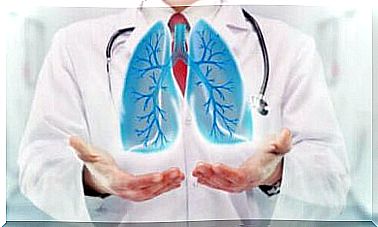Transferability: The Real Danger Of The Coronavirus
The new coronavirus SARS-CoV-2 has spread to almost every country in the world, so it is essential to be well informed about the transferability of this virus in order to to protect yourself and others. Find out interesting facts about this topic today.

Scientists all over the world are taking part in a race against time to prevent the coronavirus (SARS-CoV-2) from spreading further. The high infection rate due to the rapid transferability has brought life to a standstill in many countries. Measures such as restricted mobility, quarantine, hand washing and other preventive steps should, as far as possible, flatten the infection curve as long as there is no vaccination.
To be successful in fighting this pathogen, we need to understand exactly how it works. The precise properties of the virus need to be better researched, but we now know quite a bit about its transferability.
Viruses are small organic structures made up of nucleic acid surrounded by proteins. They have the ability to invade a host cell in order to reproduce.
It is usually not beneficial for a virus to kill its host because it needs it to survive on its own. A virus is efficient when it can reproduce undisturbed and unnoticed in its carrier in order to infect as many other individuals as possible before symptoms appear that draw attention to it.
Portability therefore plays a fundamental role in combating any epidemic. Then you will find out why this is so.
Coronavirus Transmissibility: What You Should Know About It
The Centers for Disease Control and Prevention (CDC) explain that the transferability of a virus from one person to another varies greatly. Some viruses are highly contagious while others are very slow to act. To understand why the portability of the new SARS-CoV-2 coronavirus is so dangerous, we need to understand the exact process.
The base reproduction number (R0)

The basic reproduction number or basic reproduction rate, or R0 value for short, indicates how many other people an already infected person infects on average during the infectiousness. If this value is below 1, the infection will go away after a long period. But if the values are higher, there is a likelihood of continuous spread.
An example:
- The base reproduction rate for measles is 15 (R0: 15), which means that it is a highly contagious disease.
This value expresses that a person infected with measles infects an average of 15 more people while they are infectious if they are not vaccinated against it. For common flu, the R0 value is 1.3.
It is estimated that the basic reproduction number of the coronavirus (SARS-CoV-2) is between 2 and 3. The transferability is therefore twice as high as that of the common flu, but far lower than with measles. But where is the real danger of the coronavirus in this case, if we have long since learned to deal with other diseases that have a much higher basic reproduction number?
The incubation period and asymptomatic persons
We hear reports from many people in the news confirming that while they are carriers of the coronavirus, they have no symptoms. This is exactly where one of the biggest problems lies:
- Statistical data show that 80 percent of those infected with corona have only very mild symptoms and therefore do not need a hospital stay.
- In China, 43,000 people have been diagnosed with Covid-19 with no clear symptoms.
- The incubation period is between 5 days and 3 weeks, with an average of 7 days. It was possible to confirm infections by carriers in the incubation phase, but this is not the main infection time.
These data give hope to individuals: it is possible that people at low risk may have already overcome the disease without realizing it. This is of course very positive for the people concerned, but very dangerous for people at risk in their environment. The relatively good health of infected people increases the spread of the virus.
Higher portability through the cunning strategy of the new coronavirus

If an infected person becomes seriously ill immediately, they must be treated immediately in hospital. This will make it less likely that other people will be infected with the virus. In this case, the R0 value is less than 1.
But the high efficiency of the coronavirus and its cunning strategy is due to the fact that many carriers can continue their everyday lives as normal. You may have a cough, headache, or a mild fever, but these symptoms are not so limiting as to require hospitalization.
We have all probably gone to work or shopping several times with a cough, sore throat or general malaise. But this seemingly normal situation enables the virus to search for other hosts via droplets that we release into the air when we speak, cough or sneeze, whereby people in the risk groups are the best targets. This is exactly where the key to the success of the coronavirus lies: healthy people can continue their everyday life normally despite an infection, and so the new coronavirus can find many other victims and reproduce quickly.
The importance of diagnosis
This is exactly why mass diagnosis is so important: Fast tests that are carried out on as many people as possible can reduce the rate of infection. Therefore, all people who have had contact with infected people or were in risk areas should be tested, even if they do not show any symptoms.
This is extremely difficult for logistical reasons. Because the disease spreads very quickly and time and resources are limited. For this reason, in most countries only those people who have had direct contact with infected people or who have clear symptoms are currently tested.
So the real danger of the coronavirus does not lie in the mortality rate, which is particularly high in the elderly, but results in very different figures in different regions and needs to be researched more closely. The fast transferability of the SARS-CoV-2 is really dangerous. Therefore, contact with others in this acute phase of the pandemic must be kept as low as possible.









